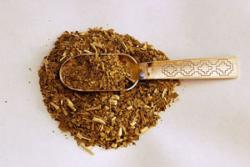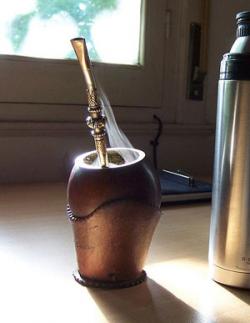
At first, yerba mate (pronounced MAH-tay) tastes bitter. When you suck the hot infusion through a metal straw, your tongue curls with the pungent flavors of hay, grass clippings, and tobacco. However, give it a chance. You just might come around—I did.
I first tried it in Buenos Aires, a cosmopolitan city with posh neighborhoods and flair for fashion. Residents love to compare it to Paris. I was told that Argentine women treat plastic surgery like a manicure. That they’re obsessed with their weight, and they all look like Vogue cover models. Therefore, when I moved into an apartment with six Argentine women—all svelte and elegant—I didn’t know what to expect.
I ate chocolate – an activity that girlfriends tend to encourage in the United States. To my surprise, they tore the comforting chocolate treats from my hands. “You’re going to get fat!” my roommate yelled. This confirmed my earlier assumption—Argentine women were shallow.
One afternoon I came home from teaching an English class all my roommates home.
“Should we have mate?” one of my housemates asked, pulling out a hollowed-out gourd and an ornate silver straw, called a bombilla.
 I knew that an invitation to drink yerba mate—brewed from the dried leaves and stems of a holly-like tree that grows in subtropical South American forests—was special. The process of sharing mate is a social ritual in Argentina and other Latin American countries. Indigenous South Americans discovered it, and the tradition of drinking it in groups goes back hundreds of years.
I knew that an invitation to drink yerba mate—brewed from the dried leaves and stems of a holly-like tree that grows in subtropical South American forests—was special. The process of sharing mate is a social ritual in Argentina and other Latin American countries. Indigenous South Americans discovered it, and the tradition of drinking it in groups goes back hundreds of years.
“When people gather to drink mate, something magical happens,” Buenos Aires-based author Mónica G. Hoss de le Comte wrote in her book, The Mate. “It is a simple, humble, daily custom and yet it has all the characteristics of a ceremony.”
The ceremony goes like this. The self-designated server sprinkles the yerba mate into the gourd, which is about the size of a pear. Then the server positions the straw perfectly, so pieces of the dried leaves won’t clog it and pours in hot water from a thermos. To be polite, the server slurps up the first, most astringent-tasting serving of the tea-like, non-alcoholic beverage. The server then refills and passes the gourd to the next person, who also drains the liquid.
 There are elaborate etiquette rules, too. For example, don’t ask for sugar if the server doesn’t use it. (Some like it plain, while others add sugar and even, as one of my roommates liked to do, aromatic curls of orange peel.) Don’t say anything about germs—the act of sharing the same straw signifies acceptance.
There are elaborate etiquette rules, too. For example, don’t ask for sugar if the server doesn’t use it. (Some like it plain, while others add sugar and even, as one of my roommates liked to do, aromatic curls of orange peel.) Don’t say anything about germs—the act of sharing the same straw signifies acceptance.
“What’s nice is that everyone is together, drinking, sharing,” le Comte says.
Mate helped Buenos Aires-born Alex Pryor, who later co-founded the California-based Guayakí yerba mate company, make friends when he moved to California to attend California Polytechnic State University, in San Luis Obispo.
“There are very few things that you share around like that,” he says. “It’s not like you sip a little bit of a glass of red wine and then pass it over (to the person next to you) – so it really represents friendship.”
I also found friendship. Over daily mate, I got to know my housemates—Lu and Andrea, both university students from the mountainous city of San Carlos de Bariloche; Elizabeth, a nurse; and Claudia, a young professional a few years older than the rest of us and the unofficial “mom” of the house.
Over mate, we talked about our work, classes, and fights with boyfriends. We discussed our annoying landlord, the political issues of the day and we laughed—a lot.
With each drink, I realized the error in my hasty assumptions. As I got to know these warm and funny women over the bitter brew, I tasted its sweetness.
